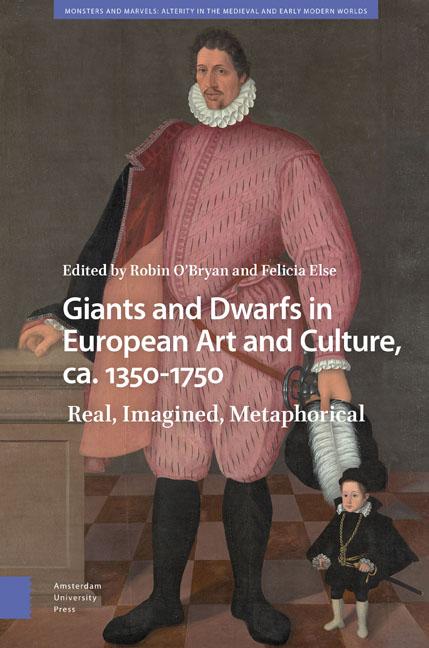2 - St. Christopher the Giant : Imagining the Sublime in Fifteenth- Century South Tyrol
Published online by Cambridge University Press: 13 April 2024
Summary
Abstract
Between the twelfth to sixteenth centuries, colossal depictions of giants appeared in the public spaces and pilgrimage routes of South Tyrol. While most of these giants had their origins in courtly literature, a notable exception emerged: the image of St. Christopher, whose vita was changed to portray him as a giant. Although giants were traditionally perceived as cursed, this new visual stratagem characterizing a saint as a giant, was seemingly peculiar. However, both were regarded as liminal beings, which saw notions of the “gigantic” acquiring new and positive spiritual connotations. Accordingly, when viewed against the backdrop of the Alpine landscape, these colossal images of Christopher appearing on the exterior of rural churches attest to the period's understanding of the sublime.
Keywords: Alps, liminality, sublimity, pilgrimage churches, mirabilia, mermaid
In St. Nicholas Church in Merano, South Tyrol, a fifteenth-century colossal painted image of St. Christopher bearing Christ on his shoulders, and measuring about ten meters in height, features above the southern entrance, reaching the roof (figure 2.1). In his right hand the saint holds the miraculously blooming staff, one of his traditional attributes, taken from the fifth- and sixth-century written legends. As a later addition, a mermaid is shown between Christopher's feet as he straddles a river (figure 2.2). Such paintings of Christopher bearing Christ were highly popular in Europe in general and in the Alps in particular between the twelfth to sixteenth centuries. Indeed, Christopher's popularity led to a change in his longstanding literary image. Whereas in the visual arts in South Tyrol he had been portrayed as a giant already during the twelfth century, in his vitae and written legends his transformation into a giant occurred only during the thirteenth century. Moreover, while depictions of Christopher are usually located in the interior of a church, in the Alps they are mostly located on the exterior of buildings erected along Alpine roads, intentionally positioned on the particular side of a building that enables the image to function in concert with its mountain backdrop. I would like to suggest that these images, set against the background of imposing nature, are manifestations of this period's notion of the sublime.
- Type
- Chapter
- Information
- Giants and Dwarfs in European Art and Culture, c. 1350-1750Real, Imagined, Metaphorical, pp. 95 - 124Publisher: Amsterdam University PressPrint publication year: 2024



